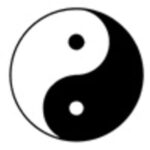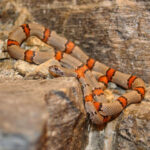Tai Chi is one of the most popular forms of exercise in the world. I’m going to write a little about the various schools of Tai Chi and how they developed. Most people don’t realize that Tai Chi (pinyin Taiji) was originally a very powerful form of martial arts.
The first theory of the evolution of Tai Chi comes from the Yang family. For some reason they decided that they would spread the story that Tai Chi was founded by a Daoist named Chang San Feng. The story goes that Chang witnessed a battle between a snake and a crane. Fascinated by the crane’s fierce pecking and wing flapping; as well as the snakes smooth, undulating defensive moves and agile strikes, Chang decided he could turn those concepts into a system of self defense. Certainly Chang San Feng existed but there is no credible evidence that he had anything to do with creating Tai Chi.
Chen Style Tai Chi
A more likely account is that the art was gradually developed by the Chen family based on their own indigenous boxing styles combined with Daoist internal strength practices. The Chen family’s own history credits their ancestor Chen Wangting with assimilating these practices with their own form of “Cannon Pounding (Pao Chui) Boxing” into seven training routines. These were the five Pao Chui forms, a “short hitting” routine and the long 108 form.
Later, in the 14th generation of Chen family martial arts, Chen Changxing codified all these routines into two training forms he called “Old Frame (Laojia). This consisted of the slower first routine (Yilu) and the more aggressive Cannon Fist. Chen was also noted for taking on the first recorded non-family member as a disciple. This man would prove to be a giant in the art and the one who brought Tai Chi, the martial art into much greater prominence. This man was Yang Luchan, the founder of the Yang Family Tai Chi system.
Chen style Tai Chi was kept hidden in the clan’s village until the early part of the 20th century when Chen Fake came to Beijing. He and his nephew, Chen Zhaopei presented Chen style to a more general public. In his later years Chen Fake developed a “new frame (xinjia)”. This tighter and more compact set was later popularized by Chen’s son, Chen Zhaokui.
In addition to empty handed routines, Chen style has weapons training. These include: the 49 posture straight sword (jian), the 13 posture saber (dao), spear (qiang)
Forms-single and partner practice, the 3, 8, and 13 posture staff (gwun) forms, and the 30 posture halberd (Kwandao) set.
Yang Style Tai Chi
As mentioned above, Yang Luchan was admitted as a disciple to Chen Changxing. Yang was born in the county of Yong Nian in Hebei Province. His family were poor farmers but Yang still found the means to study with a local martial art teacher, probably learning the Shaolin Red Fist style. As the story goes Yang was passing by a local herb shop when he heard a commotion from inside. An unruly customer started to attack one of the shop-keeper, Chen Dehu. All of a sudden Yang saw the customer come flying through the doorway. Yang had never seen such a display of effortless power before. Gathering up his courage Yang begged the shop-keeper for instruction. Chen downplayed his own ability but said he was from the Chen Village (Chenjiagou) in Henan Province. Chen offered to write a letter of introduction to his relative, the boxing master Chen Changxing.
This Chen gave Yang a job as servant in the village and Yang studied the Chen’s martial arts for six years. Finding himself back in his own town, Yang was challenged by a local boxer and was defeated. Due to this humiliating circumstance he returned back to the Chan village for another six years of study. He then returned to Yong Nian and taught martial arts for a living. Not long after this Yang was invited to teach in Beijing where his fame grew steadily.
Yang’s Tai Chi contains fewer weapons than Chen or Wu style. They practice the 67 posture straight sword, the 13 posture saber, and the 13 posture spear. Later, when a Yang family member was accidentally killed in spear practice, the point was removed from the spear and it became a long staff. This was primarily used for internal power training.
Wu Style Tai Chi
Yang Luchan worked for the Imperial family teaching professional bodyguards. One of the bodyguards was a Manchurian named Quan You. He studied with Yang and often trained with Yang’s son, Yang Banhou. Quan concentrated on Yang’s smaller frame of Tai Chi. This led him to develop an incredible skill. Quan’s son took the Han family name of Wu and was known as Wu Jianquan. Wu modified his father’s art and it was given the name of Wu style Tai chi, although Wu never meant it to be separate from the Yang’s Tai Chi. Wu’s Tai Chi differs somewhat from Yang’s in its use of parallel footwork and extensive use of the horse riding stance. Wu Tai Chi trains grappling, throwing, pressure point leverage techniques and joint locks and breaks.
Like the other styles, Wu Tai Chi contains weapons practice. This includes: The 13 posture saber, the 32 posture straight sword, the 64 posture straight sword, the sticking staff, and the 13 and 24 spear sets.
Wu/Hao Tai Chi
Not to be confused with the more popular Wu Jianquan style (above) this style was developed by Wu Yuhsiang. This Wu was from a wealthy family and became a senior student of Yang Luchan. Yang introduced Wu to another Chen style teacher, Chen Chingping, with whom he studied for a time. Wu is most remembered for his writing which influenced many other practitioners, even those of other Tai Chi styles. Wu’s top student was his nephew, Li Iyu. Li in turn taught Hao Weizhen who taught the famed Sun Lutang. The Wu/Hao style is much less seen than the other styles. It is characterized by small and subtle movements, a highly balanced posture and its internal energy development.
Sun Tai Chi
Previous to his study of Tai Chi, Sun Lutang was a master of the internal martial style of Xingyi. In addition he studied with Cheng Tinghua of the Eight Trigram Palm (Baguazhang) system. As reward for helping nursing him back to health Hao Weizhen taught Sun his Tai Chi style. Sun is said to have added baguazhang’s stepping method and xingyi’s waist training to his Tai Chi and thus it became Sun style Tai Chi. In terms of sequence and characteristics, Sun’s form retains much of the Hao style.
So as you can see, Tai Chi enjoys a rich and diverse history. There is enough similarity and difference to challenge any current potential students in this great art.







